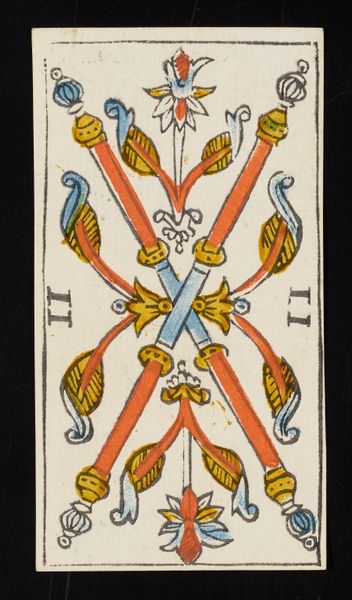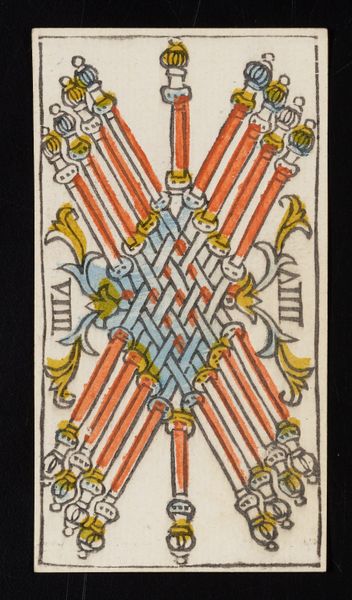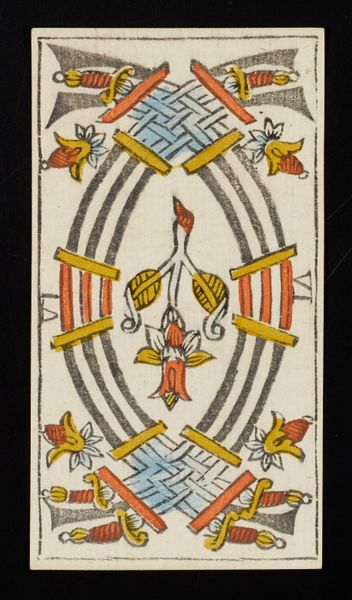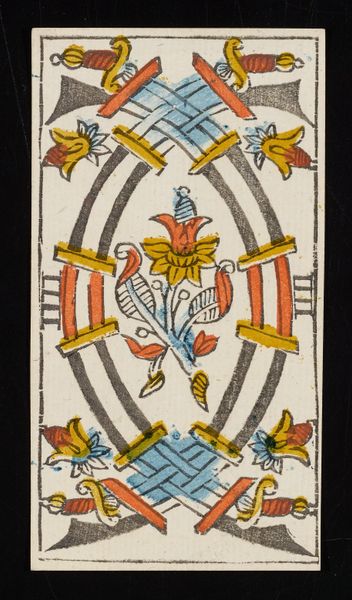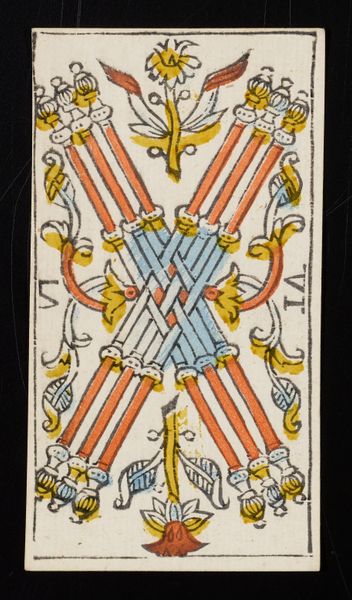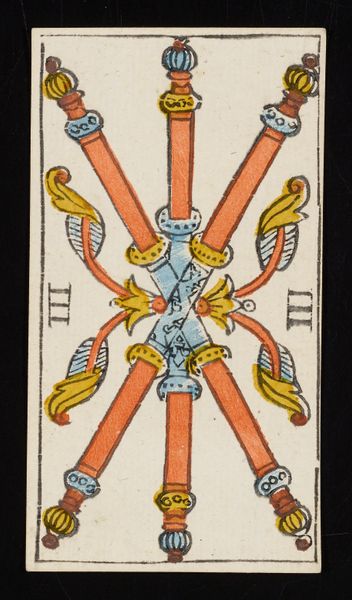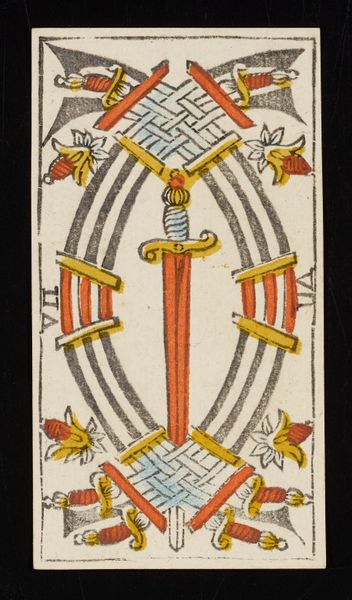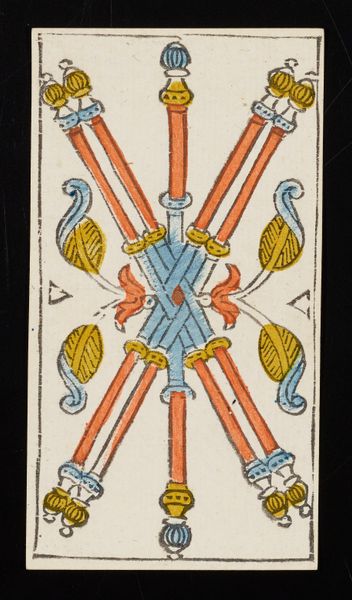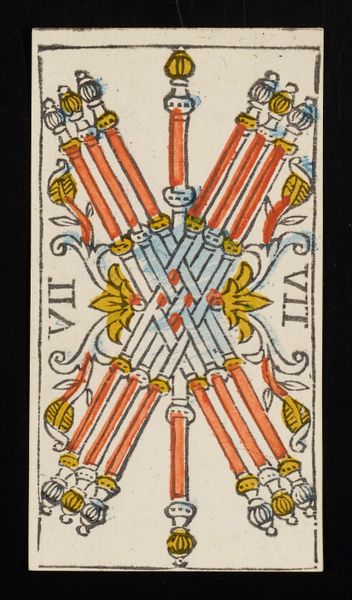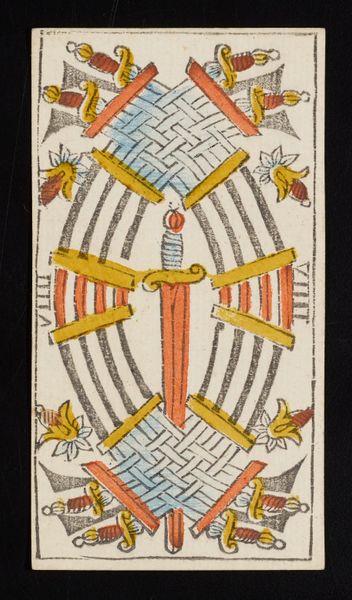
print, etching
#
baroque
# print
#
etching
#
figuration
#
linocut print
#
line
#
decorative-art
Dimensions: 4 7/16 x 2 7/16 in. (11.27 x 6.19 cm) (image, sheet)4 5/8 x 2 1/2 in. (11.75 x 6.35 cm) (sheet, each)
Copyright: Public Domain
This is ‘Four of Batons,’ a card made by Claude Burdel in Switzerland sometime in the 18th century. During this period, the rise of the merchant class was reshaping European society. The popularity of games of chance, and the symbolic language of tarot cards, reflect a culture grappling with new social mobility, economic uncertainty, and the shifting fortunes of everyday life. The four batons are arranged to form a symmetrical, decorative pattern, surrounded by stylized floral motifs. The symbolism of the "baton" itself, often associated with virility, power, and authority, cannot be separated from the historical and social context in which the work was produced. The card could represent an individual’s personal striving for stability and success. It might also suggest a complex interplay of class, gender, and power relations within society. Cards such as these gave people a framework through which to understand their own lives, hopes, and fears. They prompt us to consider the narratives and meanings we assign to objects, and the role of chance in shaping our destinies.
Comments
No comments
Be the first to comment and join the conversation on the ultimate creative platform.
